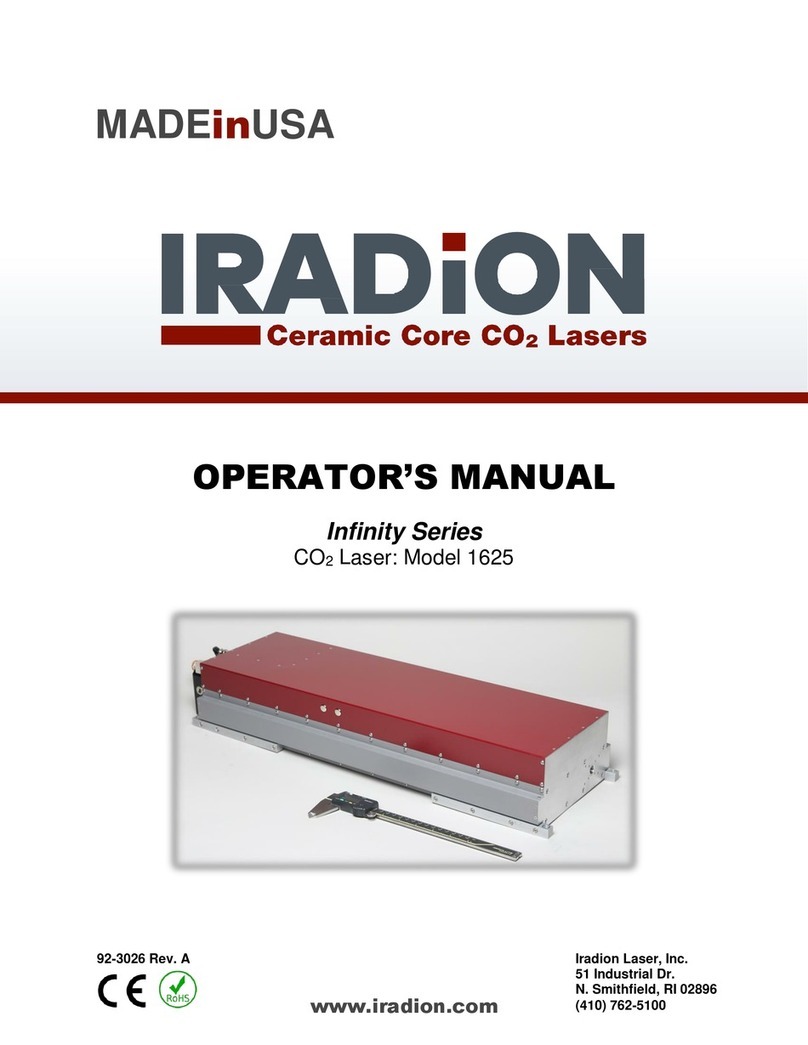
92-3005 2
Table of Contents
Table of Contents........................................................................2
Hazard Information......................................................................3
Terms......................................................................................................3
General Hazards..........................................................................4
Infinity Series Label Locations ..................................................6
Laser Safety.................................................................................7
Other Hazards..............................................................................7
Declaration of Conformity..............Error! Bookmark not defined.
Introduction .................................................................................8
CDRH..........................................................................................10
Available Safety Features.........................................................10
System Overview ......................................................................11
Quick Start Connection Guide.................................................12
Power Cable, All Lasers........................................................................ 12
Connector (RJ-45), All Lasers ............................................................... 12
Connector (HD-15), Lasers Shipped AFTER January 1, 2016............... 13
Connector (HD-15), Lasers Shipped BEFORE January 1, 2016............ 14
Nominal Operating Voltages.................................................................. 15
“F” Type Lasers..................................................................................... 15
“W” Type Lasers.................................................................................... 15
Operation of Unit.......................................................................16
Tickle Pulse........................................................................................... 17
Laser Command Signals....................................................................... 18
System Test.......................................................................................... 19
Laser Indicator Lights............................................................................ 19
Water Cooled Laser Connections.......................................................... 20
Condensation........................................................................................ 22
Iradion RS232 Com Test Software...........................................23
Mechanical Outline ...................................................................24
Specifications, 10.2µm and 10.6µm.........................................25
Specifications, 9.3µm................................................................26
Troubleshooting........................................................................27































